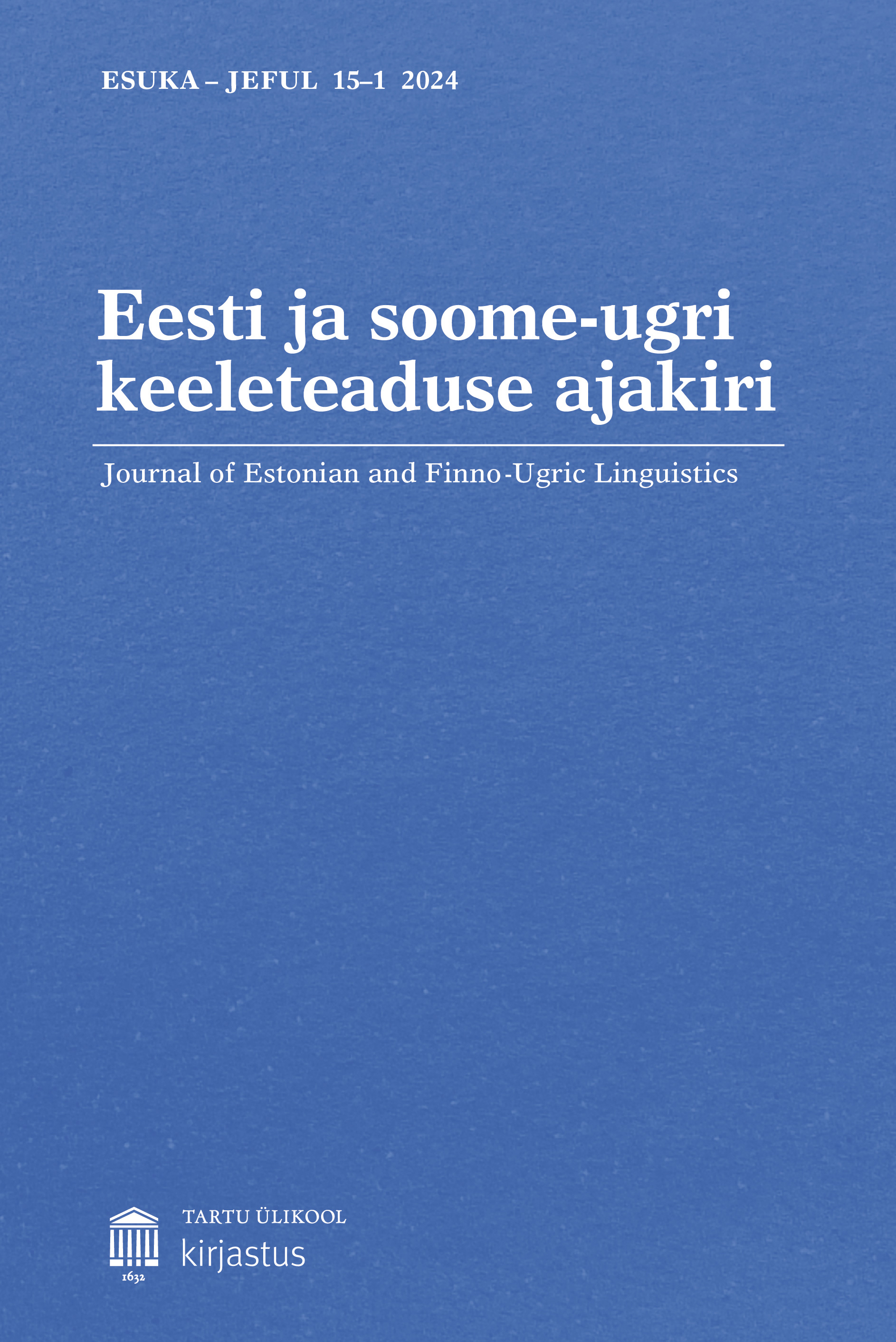Impersonal or passive? Some approaches to analysis (based on the Veps and Estonian languages)
DOI:
https://doi.org/10.12697/jeful.2024.15.1.07Keywords:
impersonal, passive, Finnic languages, Veps language, Estonian language, corpus study, syntactic homonymy, impersonaal, passiiv, läänemeresoome keeled, vepsa keel, eesti keel, korpusuuring, süntaktiline homonüümiaAbstract
This article deals with constructions of the form “to be + passive participle” in Veps and Estonian. Depending on the syntactic context, these constructions can be considered either impersonal or passive. Cases where the syntactic properties of the context do not allow us to determine whether a construction is impersonal or passive are the main object of the study. The article proposes two approaches to analysing these cases, using a corpus study in Veps and the analysis of a native speaker survey in Estonian. Analysis of the Veps data shows that 66% of the sample collected cannot be unambiguously attributed to the impersonal or the passive construction. At the same time, there is a correlation between polarity and construction choice: the passive occurs more often in negative contexts and the impersonal occurs more often in affirmative contexts. The results of the Estonian survey show that 88% of constructions are interpreted as passive. Verb tense and stative/dynamic semantics do not correlate with construction type, but there is a relationship between the preverbal position of the nominative argument and the passive construction. It was assumed that in the impersonal construction the argument has a special status and is not a prototypical object but has both object and subject features.
Kokkuvõte. Polina Oskolskaia: Kas impersonaal või passiiv? Mõned lähenemised umbisikuliste konstruktsioonide analüüsile (vepsa ja eesti keele materjali põhjal). Artiklis käsitletakse „olla + passiivne partitiiv -tud“ konstruktsioone vepsa ja eesti keeles. Sõltuvalt süntaktilistest tingimustest võivad need konstruktsioonid olla impersonaalsed või passiivsed. Artiklis uuritakse neid olukordi, kus konteksti süntaktilised omadused ei võimalda täpselt kindlaks teha, kas konstruktsioon on impersonaalne või passiivne. Tehakse ettepanek kaaluda kahte lähenemist selliste olukordade analüüsimiseks vepsa keele korpusuuringu ja eesti keele emakeelekõnelejate küsitluse analüüsi näitel. Vepsa andmete analüüs näitab, et 66% kogutud valimist ei saa üheselt seostada ei impersonaali ega passiivi konstruktsiooniga. Samal ajal esineb korrelatsioon polaarsuse ja konstruktsioonivaliku vahel: passiiv esineb sagedamini eitavates kontekstides ja impersonaal esineb sagedamini jaatavates kontekstides. Eesti keele uuringu tulemused näitavad, et 88% konstruktsioonidest tõlgendatakse passiivina. Verbi aeg ja statiivne / dünaamiline semantika ei korreleeru konstruktsioonitüübiga, kuid on olemas seos nominatiivse argumendi preverbaalse positsiooni ja passiivkonstruktsiooni vahel. Eeldati, et impersonaalses konstruktsioonis on argumendil eriline staatus ja see ei ole prototüüpne objekt, vaid sellel on nii objekti kui ka subjekti tunnused.
Downloads
Downloads
Published
How to Cite
Issue
Section
License
Copyright (c) 2024 Polina Oskolskaia

This work is licensed under a Creative Commons Attribution 4.0 International License.


